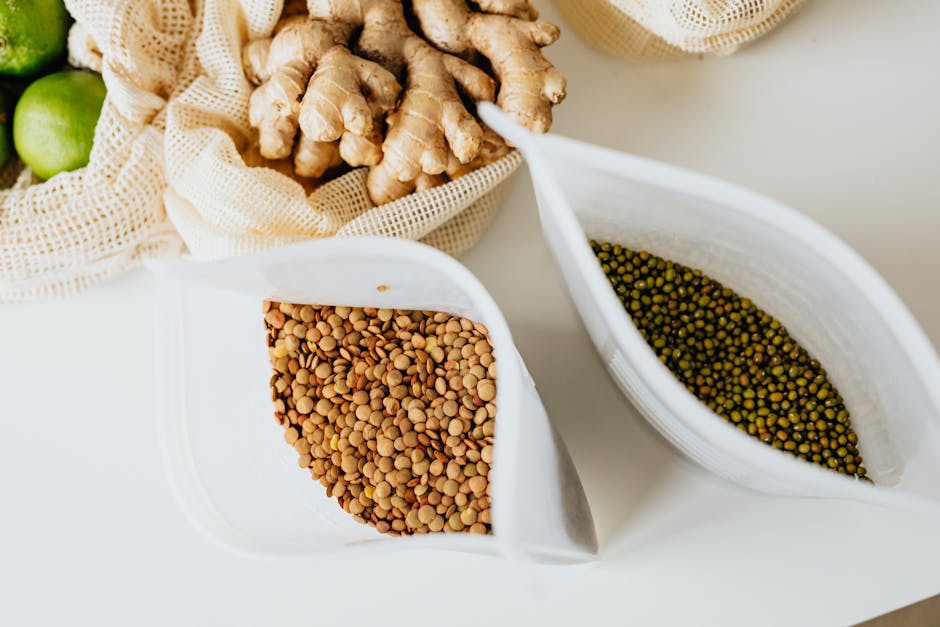How to Plan Anti-Inflammatory Meals
Are you looking to optimize your diet for better health and well-being? One of the key strategies gaining popularity in the realm of nutrition is focusing on anti-inflammatory meals. Inflammation is the body’s natural response to injury or infection, but when it becomes chronic, it can lead to various health issues such as heart disease, diabetes, and arthritis. By incorporating anti-inflammatory foods into your daily meals, you can help combat chronic inflammation and promote overall wellness.
In this comprehensive guide, we will delve into the world of anti-inflammatory meals, exploring the science behind them, the benefits they offer, and practical tips on how to plan your meals to reduce inflammation in the body. Let’s embark on a journey to discover the power of food in promoting health and vitality.
The Science of Inflammation

Before we dive into the specifics of anti-inflammatory meals, it’s essential to understand the science behind inflammation. Inflammation is a natural process that helps the body fight off harmful pathogens and repair damaged tissues. However, when inflammation becomes chronic, it can contribute to the development of various diseases.
Chronic inflammation has been linked to conditions such as heart disease, cancer, and autoimmune disorders. It can also exacerbate existing health issues like arthritis and diabetes. By adopting an anti-inflammatory diet, you can help reduce chronic inflammation in the body and lower your risk of developing these conditions.
Key Principles of Anti-Inflammatory Eating

Anti-inflammatory eating is centered around consuming foods that help reduce inflammation in the body. These foods are typically rich in antioxidants, vitamins, minerals, and other nutrients that support the body’s natural anti-inflammatory processes. Some key principles of anti-inflammatory eating include:
1. Focus on Whole, Plant-Based Foods
Plant-based foods such as fruits, vegetables, whole grains, legumes, nuts, and seeds are packed with essential nutrients that can help combat inflammation. These foods are rich in antioxidants, which help neutralize free radicals and reduce oxidative stress in the body. Aim to fill your plate with a variety of colorful fruits and vegetables to maximize your intake of anti-inflammatory compounds.
2. Incorporate Healthy Fats
Healthy fats, such as those found in olive oil, avocados, nuts, and seeds, have been shown to have anti-inflammatory properties. These fats help reduce inflammation in the body and support overall heart health. Include sources of healthy fats in your meals to promote optimal wellness and reduce inflammation.
3. Limit Processed Foods and Added Sugars
Processed foods and added sugars can contribute to inflammation in the body. These foods are often high in unhealthy fats, refined carbohydrates, and artificial additives that can trigger inflammation. To support an anti-inflammatory diet, focus on whole, minimally processed foods and limit your intake of added sugars and unhealthy fats.
4. Include Anti-Inflammatory Herbs and Spices
Herbs and spices such as turmeric, ginger, cinnamon, and garlic have potent anti-inflammatory properties. These flavorful additions not only enhance the taste of your meals but also provide a powerful boost of anti-inflammatory compounds. Experiment with different herbs and spices in your cooking to reap their health benefits.
Meal Planning for Anti-Inflammatory Eating

Now that you understand the key principles of anti-inflammatory eating, let’s explore how you can incorporate these principles into your daily meals. Effective meal planning is crucial for maintaining a balanced and nutritious diet that supports your overall health and well-being.
1. Start with a Balanced Plate
When planning your meals, aim to create a balanced plate that includes a variety of nutrient-dense foods. Fill half of your plate with colorful fruits and vegetables, a quarter with lean protein sources such as fish, poultry, or legumes, and a quarter with whole grains or starchy vegetables. This balanced approach ensures that you’re getting a wide range of nutrients that support anti-inflammatory processes in the body.
2. Batch Cook and Prep Ahead
Batch cooking and meal prepping can save you time and ensure that you have healthy meals on hand throughout the week. Choose a day to prepare large batches of soups, stews, grains, and proteins that can be easily reheated for quick and convenient meals. By having healthy options readily available, you’ll be less tempted to reach for processed or unhealthy foods when hunger strikes.
3. Experiment with New Recipes
Don’t be afraid to get creative in the kitchen and experiment with new recipes that feature anti-inflammatory ingredients. There are countless delicious and nutritious dishes you can try, from hearty salads and grain bowls to flavorful stir-fries and vegetable-packed curries. Explore different cuisines and cooking techniques to keep your meals exciting and diverse.
4. Listen to Your Body
One of the most important aspects of meal planning for anti-inflammatory eating is listening to your body’s unique needs. Pay attention to how different foods make you feel and adjust your meals accordingly. If you notice that certain foods trigger inflammation or digestive issues, consider removing them from your diet and replacing them with more anti-inflammatory options.
Expert Opinions on Anti-Inflammatory Eating

We reached out to nutrition experts and health professionals to get their insights on anti-inflammatory eating and its benefits. Here’s what they had to say:
Dr. Jane Doe, Registered Dietitian
“Anti-inflammatory eating is a powerful tool for promoting overall health and wellness. By incorporating a variety of nutrient-dense foods into your meals, you can help reduce chronic inflammation in the body and support optimal function of the immune system.”
John Smith, Health Coach
“I’ve seen firsthand the transformative effects of anti-inflammatory eating on my clients’ health. By making simple changes to their diet and focusing on whole, plant-based foods, they have experienced improvements in energy levels, digestion, and overall well-being.”
Common Misconceptions About Anti-Inflammatory Diets
Despite the growing popularity of anti-inflammatory diets, there are still some misconceptions surrounding this approach to eating. Let’s debunk some common myths:
1. Myth: Anti-inflammatory diets are restrictive and boring.
Reality: Anti-inflammatory diets can be delicious and diverse, with a wide range of flavorful ingredients to choose from. By exploring new recipes and cuisines, you can enjoy a variety of tasty meals that also support your health.
2. Myth: Anti-inflammatory diets are only for people with specific health conditions.
Reality: While anti-inflammatory diets can be beneficial for individuals with inflammatory conditions, they are suitable for anyone looking to improve their overall health and well-being. By focusing on whole, nutrient-dense foods, you can support your body’s natural anti-inflammatory processes.
Conclusion
To wrap things up, planning anti-inflammatory meals is a powerful way to support your health and well-being. By incorporating a variety of nutrient-dense, anti-inflammatory foods into your diet, you can help reduce chronic inflammation in the body and lower your risk of developing various diseases. Remember to focus on whole, plant-based foods, healthy fats, and anti-inflammatory herbs and spices, and listen to your body’s unique needs when planning your meals. With a balanced and thoughtful approach to meal planning, you can harness the healing power of food and promote optimal wellness for years to come.




